Montenegro (Black Mountain) is Europe’s newest country: freshly minted in 2006 after a referendum to part ways with Serbia.
With the Adriatic to one side and imposing mountains to the other, historically Montenegro has seen more trade and affiliation with naval cities of the area (such as Venice) than with its other Balkan neighbors. Nevertheless, Montenegro was absorbed into Yugoslavia after the first World War and allied itself with its Serbian neighbor in the complex Balkan fighting that ensued in the 90s as Yugoslavia splintered off among ethnic and religious lines.
The country is small, and the population minimal (some 680,000 in the entire country), but Montenegro is a proud place with a rich history, stunning mountainous coastline, and prosperity that almost doubles its southern and eastern neighbors…not to mention a growing tourist industry that’s sure to be the next big hit for those seeking to escape Croatia’s crowds.
Images from the fortified coastal towns of Budva and Kotor:
October 12th,2009
Montenegro |
No Comments
Devoid of natural geographical beauty or of more than a handful ancient architectural gems, Albania’s capital city of Tirana also fell victim to the dreadful boxy, drab concrete architectural style prevalent throughout eastern Europe’s communist countries. So the natural foundation for a beautiful city are not entirely there in abundance.
But Tirana did something amazing. It painted.
Everywhere you turn, the dull and lifeless blocky architecture has been transformed into lively, dynamic and colorful visual eye candy with strokes of the paint brush. Walking down the cities main streets, the dazzling display of creative coloring left me beaming and inspired, proving to the world once again that even for a city, it’s not what you have, but what you do with it that counts.
Images from the colorful buildings of Tirana:
October 10th,2009
Albania |
3 Comments
Tough little Albania.
One of the last holdouts to Ottoman conquest during medieval times and the only eastern European country to rid themselves of the Germans without Soviet help during WWII, this beautiful mountainous country on the southern Adriatic just above Greece is quite the frontier land.
Despite being one of the most Muslim countries in Europe (64%), it is one of the only countries that ended WWII with more Jews than before, actively resisting deportation despite being under a succession of Italian and German rule (only 1 Albanian family was sent off to concentration camps) and actively welcoming and sheltering Jewish refugees from neighboring countries.
Although Communistic after the war until the early 90s, Albania aligned itself with China and to some extent the Soviet Union but was not subject to them, clearly evidenced by the fact that it is the only country in mainland Europe without international train access (an unthinkable development under train-loving Soviet rule).
Friendly, welcoming, but without the star tourist pull of its Adriatic neighbors, Albania is an honest slice of Balkan Europe off the beaten path and all the more appealing for it.
The pictures are primarily from the fortress of Butrint in the far south and the capital city, Tirana.
October 8th,2009
Albania |
No Comments
Thanks to naval protection from Venice, Greece’s Corfu island (in the Ioanian sea, just off the coast of Albania) is the only part of Greece that successfully avoided falling under the rule of the Ottoman Empire.
In Greek mythology, it’s the island (Kerkyra) where Ulysses is shipwrecked and saved by a beautiful princess right before making it home. It’s the island where the Argonauts sought refuge from a pursuing fleet after their successful seizure of the Golden Fleece. And it’s the island where Hercules slept with the Naiad Melite before embarking on his ten labors. Busy place.
Now, it’s the ideal summer getaway for thousands of European beach-loving tourists.
October 6th,2009
Greece |
1 Comment
What is it with monks and their penchant for fairytale-esque remote mountain monasteries?
In northern Greece, Orthodox monks “retreated” from the advance of the Muslim Ottoman expansion and built a series of 20 or so clifftop monasteries in Meteora (“suspended rocks”). Only six remain today, all impossibly impressive and made especially famous as a backdrop in the James Bond movie, For Your Eyes Only.
At the time, the only way up was via a fairly hair-raising pulley system using nets and rope, the latter replaced “when the Lord lets them break.” Given the 1800ft. (550m) height of some, one can imagine that this only increased the urge and devoutness of prayer.
October 4th,2009
Greece |
5 Comments
During the 16th century, the picturesque lakeside city of Ohrid was reported to have 365 churches, one for every day of the year. In medieval times, it was thus referenced as Slavic Jerusalem.
Far fewer than 365 churches remain, but Ohrid still impresses with its collection. Today, the city is the prime summer vacation spot for both Macedonians and foreign visitors, its climate ideal and its idyllic lakeside setting hard to resist.
October 2nd,2009
Macedonia |
No Comments
Walking around Skopje, the pleasant capital city of Macedonia, I was constantly finding myself subconsciously puzzled as to which part of the world I was in.
One minute I would be in the Macedonia of old, with the Greek heritage that set loose Macedonian king Alexander the Great onto the world. Then I’d see the boxy concrete Soviet apartment block structures and think, oh right, I’m in eastern Europe. And then I’d turn the corner and see a veiled woman walking past a cafe selling Turkish delights and glance up to see a minaret from a local mosque. Wait, where am I again?
All three.
The Former Yugoslav Republic of Macedonia (they want to call it Macedonia but the Greeks are up in arms about this because their northern province is also called Macedonia) does indeed trace its roots to the Macedonian kingdoms of old. However, centuries of Ottoman rule have also led to the country being 33% Muslim. After the Ottoman collapse the country was absorbed into Serbia following the First World War and after WWII became one of the six republics of socialist Yugoslavia. In 1991 Macedonia peacefully seceded from Yugoslavia, the only Yugoslav republic to emerge from the 1990s without being drawn into the bloody wars that gripped the other five and is a current candidate for both EU and NATO membership.
September 30th,2009
Macedonia |
No Comments
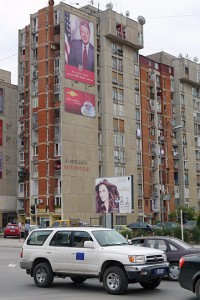 What is a country?
What is a country?
If there’s a place in the world that has its own territory, its own military, police force, flag, government, institutions, and everything else, and is not currently at war with its neighbors, isn’t that a country? What if everyone closes their eyes, covers their ears and says “lalalalala, I don’t see you,” does that invalidate it?
There are 193 universally recognized sovereign states in the world. And then there are 10 “almost” countries. Some of these are well known: Taiwan, Palestine and Kosovo in particular, the latter two due to their prominence in recent international news. Northern Cyprus is another.
But then there are those that almost no one has ever heard of. Some of these I found out about only while in the country next door. For instance, have you heard of the following countries: Abkhazia (claimed by Georgia), Nagorno-Karabakh (claimed by Azerbaijan), Sahrawi Arab Democratic Republic (claimed by Morocco), Somaliland (claimed by Somalia), South Ossetia (claimed by Georgia), or Transnistria (claimed by Moldova)?
Yet these are independent entities. Some have been diplomatically recognized by no other country, some by only a few, and some by a few dozen. But diplomatic recognition or not, these are for all intents and purposes real countries (officially they’re either called de facto or de jure countries).
The picture above is from Prishtina, capital of the de jure country of Kosovo.
September 28th,2009
Kosovo |
2 Comments
The night images are from Novi Sad, Serbia’s second-largest city and one of the most fun and lively towns in eastern Europe.
There’s one image of the Danube going through Belgrade, Serbia’s capital. After that, the last three rows are from the city of Nis in the south of Serbia. The Skull Tower was erected by the Turks in 1809 with the heads of 952 Serbian insurrectionists who had fought to liberate Serbia from the Ottoman Empire, intended as a warning to others. Only 58 skulls remain.
September 26th,2009
Serbia |
1 Comment
The train station in Szeged, Hungary isn’t that big. I got there nice and early for my 6:30am train, and with some minutes to spare I managed to snap off a few pictures in the soft dawn light.
When 6:29 rolled around, though, I started getting worried. There was one train on the tracks, but it was going to Budapest, whereas mine was heading south across the border to Subotica, Serbia. But where was it?
Confused, I asked a train engineer, and he pointed to the locomotive that I had photographed a few minutes earlier:
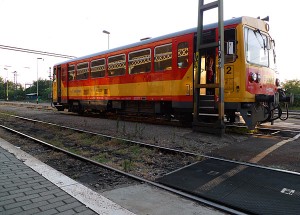
Wait, that’s the train? Yep. Forget wagons, this little rickety engine was it. I hurried on board seconds before it departed on its slow journey south.
Now, I didn’t stay in Subotica. I waited a few hours there, then connected to another train to take me to Novi Sad (as it turns out, one of the coolest cities in eastern Europe). It was a long and slow journey, though, and I promptly fell asleep.
It’s hard to describe my surprise when I woke up, looked out the window, and saw this:
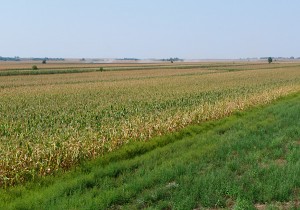
Oh my God, I’m back in Iowa! was my first thought. Flat land and corn as far as you can see. The similiraties in landscape were uncanny.
Of course, when our train stopped to let this one pass, it didn’t feel nearly as Iowan anymore:
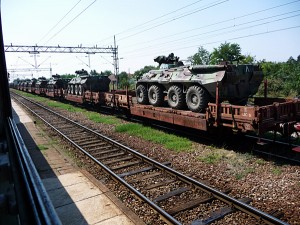
September 24th,2009
Serbia |
2 Comments
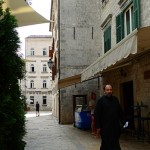
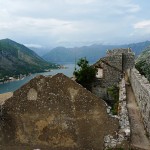
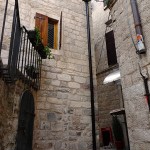
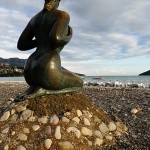
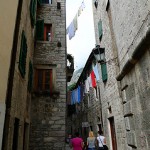
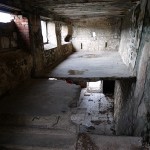
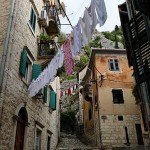
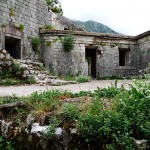
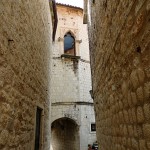
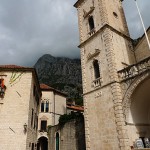
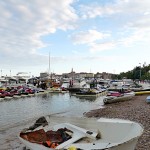
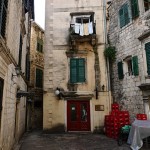
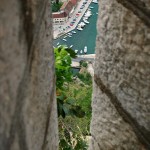
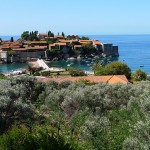
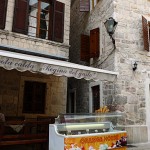
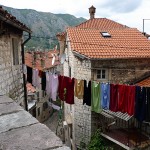
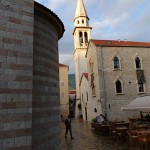
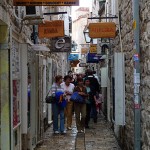
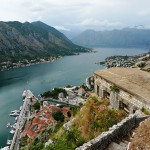
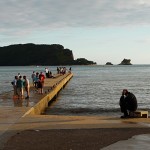
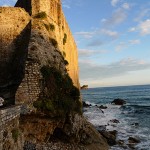
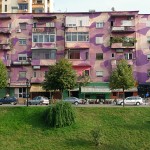
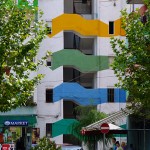
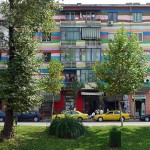
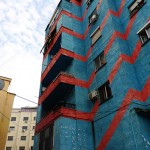
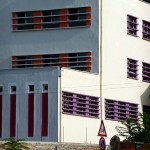
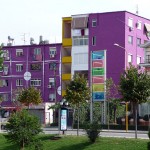
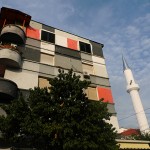
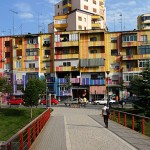
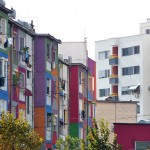
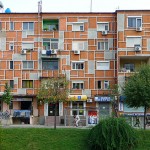
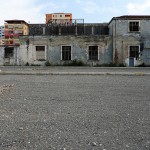
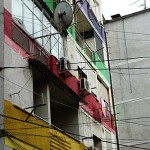
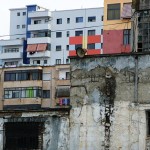
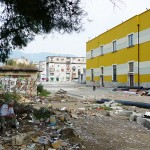
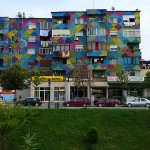
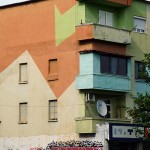
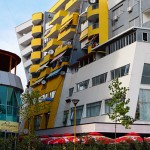
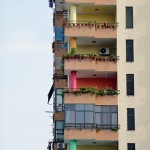
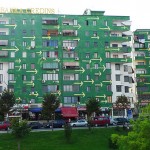
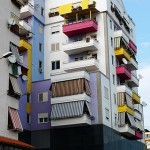
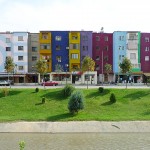
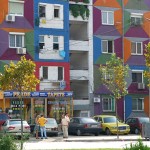
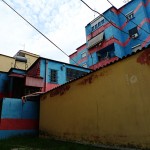
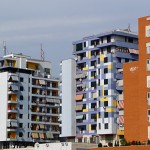
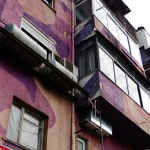
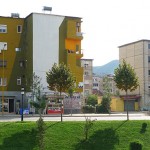
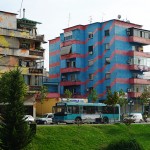
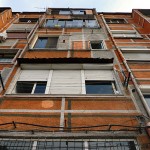
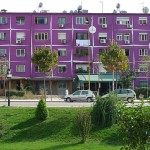
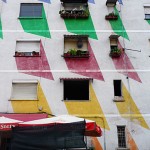
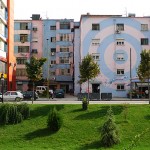
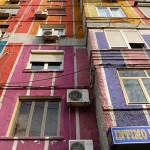
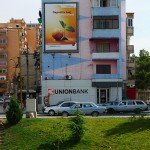
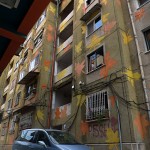
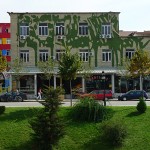
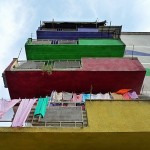
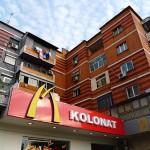
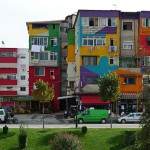
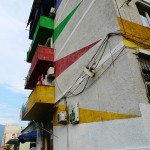
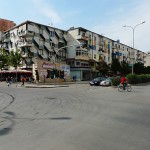
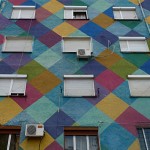
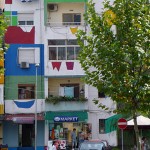
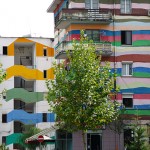
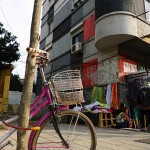
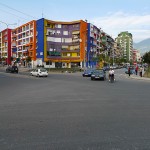
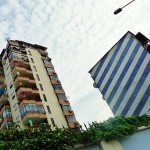
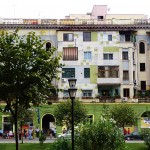
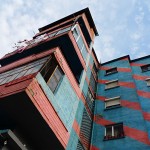
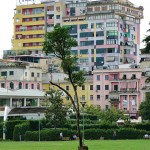
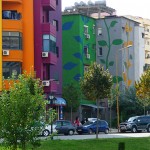
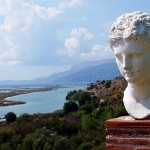
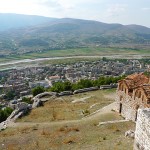
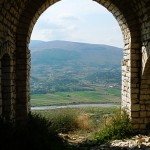
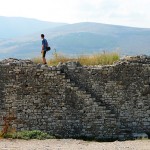
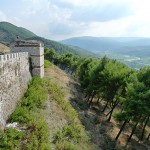
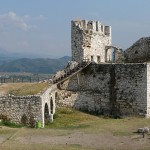
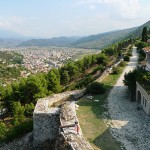
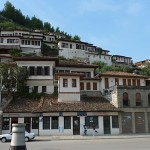
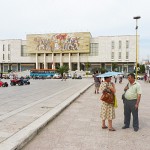
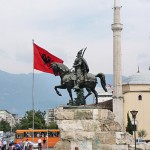
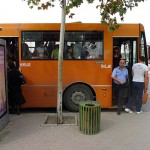
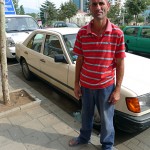
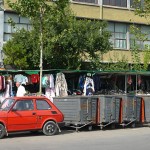
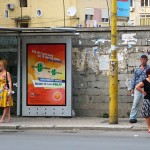
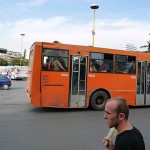
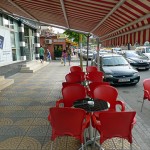
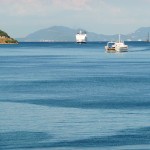
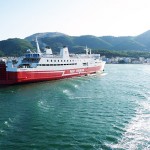
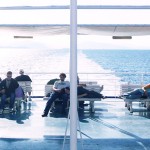
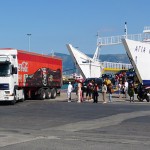
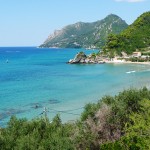
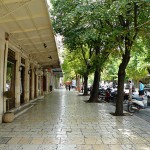
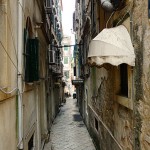
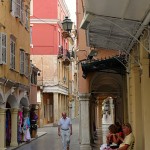
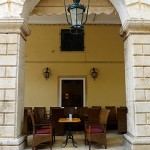
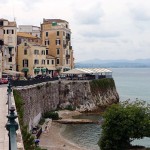
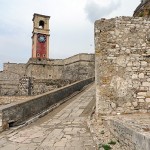
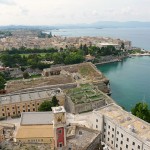
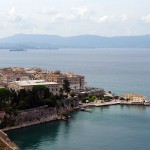
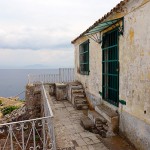
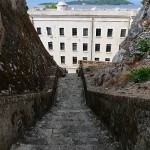
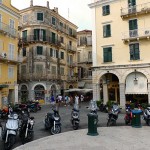
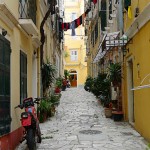
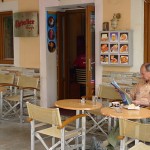
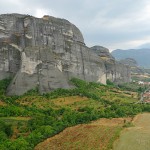
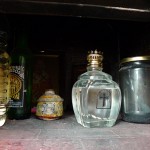
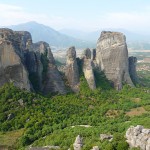
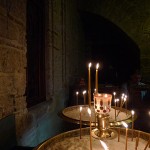
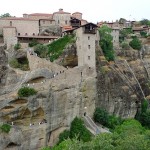
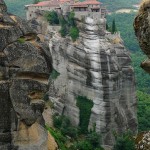
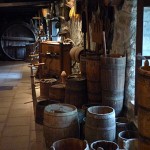
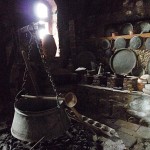
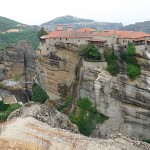
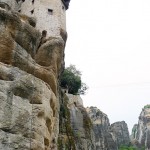
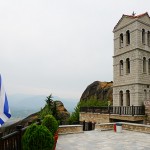
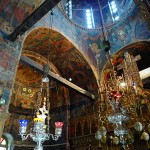
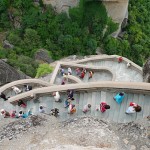
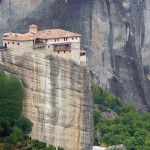
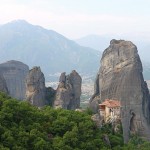
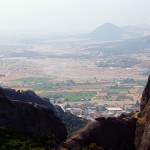
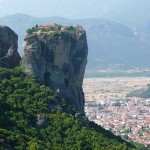
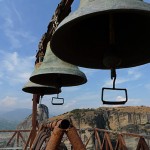
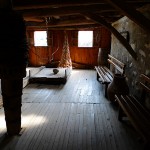
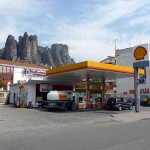
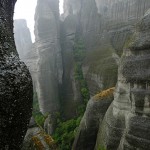
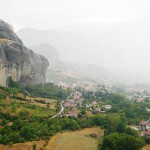
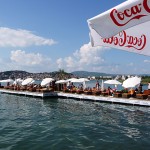
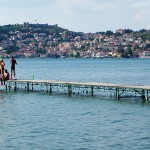
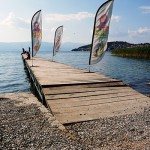
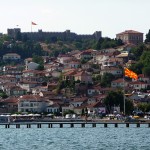
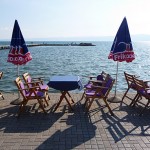
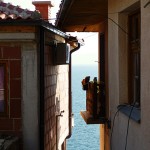
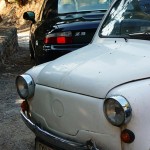
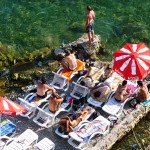
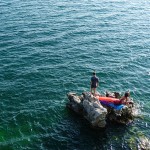
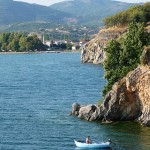
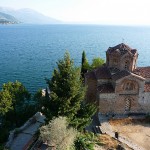

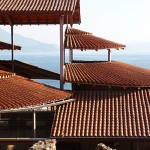
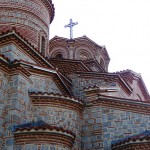
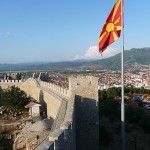
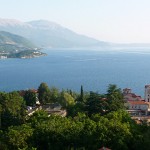
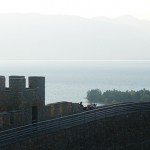
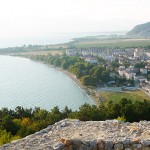
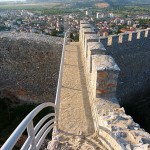
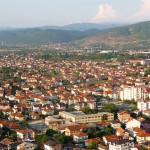
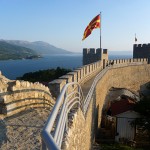
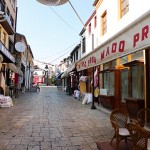
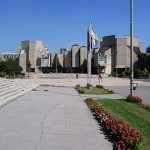
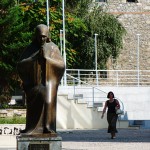
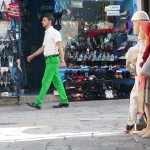
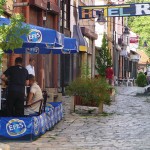
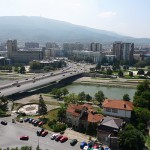
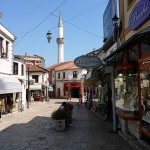
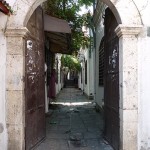
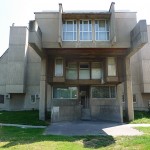
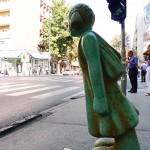
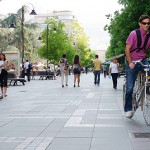
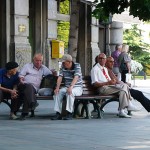
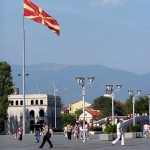
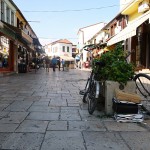
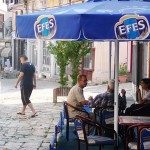
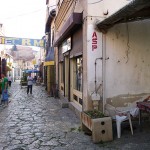
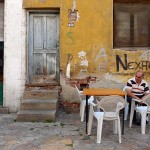
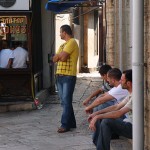
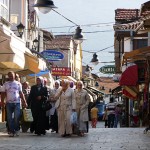
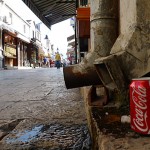

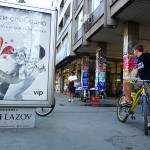
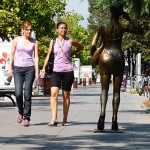
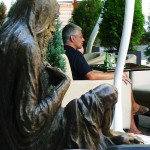


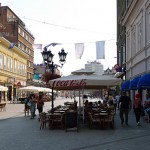
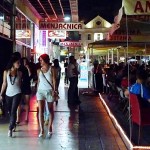
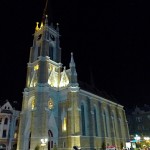
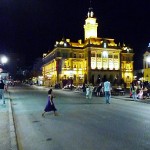
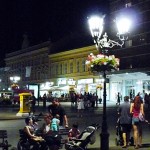
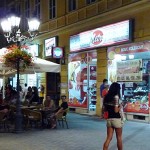
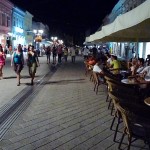
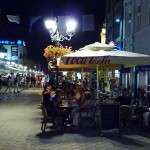
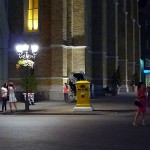
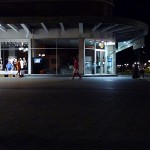
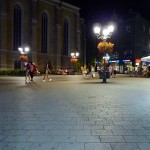
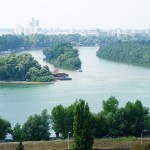
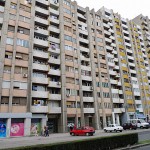

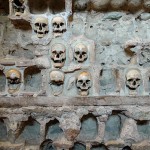

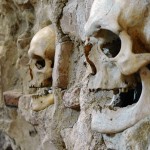
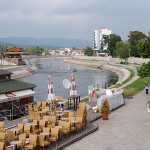



 Click to subscribe via RSS feed
Click to subscribe via RSS feed
